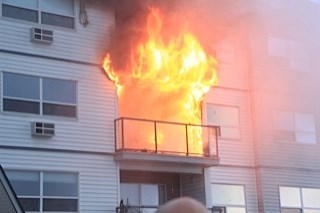The Nanaimo Fire Department is at the mercy of the long, narrow geography of the city it serves when it comes to improving its response times.
Nanaimo Fire Chief Craig Richardson said studies reveal fires in his city are likely to break out almost anywhere.
“It’s not as simple as saying: ‘We should build a fire station in this part of the city,’ ” he said. “The geography of the city prevents that, it’s spread out long and thin.”
The department is embarking on the first three years of a 15-year management plan. One aim is to bring the department’s response time in line with nationally accepted standards: The first fire truck responding to any alarm should be on scene within six minutes, 90 per cent of the time.
Richardson said Nanaimo’s department hits that six-minute arrival only 81 per cent of the time.
The department’s new fire management plan, approved by Nanaimo councillors last week, incorporates several ideas to help reach the 90 per cent mark.
The plan will be rolled out in three-year segments. The next three years will see the fire department embark on an intensive public fire-prevention education campaign.
“Our goal is [that] through prevention and additional resources over the next 10 to 15 years, we can achieve that 90 per cent,” Richardson said.
He said Nanaimo’s downtown core, for example, poses significantly higher fire hazards than outlying suburbs. Buildings tend to be older and population density is higher.
The plan calls for fire officials to go door to door, talking to people and handing out fire-prevention tips.
For example, they will check for fire alarms and suggest proper placements. Earthquake preparedness will be a big part of the education campaign.
The single biggest source of call-outs for the fire department is medical alerts. The department hopes to improve success rates by educating the public to perform CPR.
When someone steps forward to help emergency first responders, it can be the difference between life and death for a victim.
“We know if we arrive at a cardiac arrest and bystanders have already started CPR, then we will have a much higher rate of success,” Richardson said.



